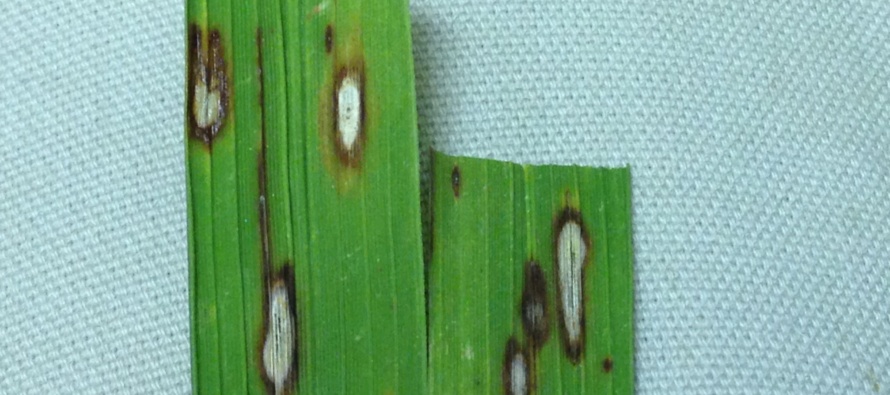Rice Leaf Blast Confirmed in Mississippi

Related Articles
- Rice Variety Trial Results For 2010, Plus Rice Research Report 0
- Evaluation of Peanut Prescription Rx Program in Mississippi 0
- Flag The Technology 0
Latest Tweets

Rice leaf blast is characterized by diamond-shaped lesions that may or may not contain fungal reproductive growth.
Once again, leaf blast has been observed in several susceptible varieties across the Delta (e.g., Rex, CL163, and CL151). The majority of the fields observed to contain leaf blast, contained blast-infected rice along edges and in areas of the field where low or no floodwater was present.
Diagnosing leaf blast at the field level has been complicated this season. Numerous disorders produce similar lesions on rice leaves. Small, brown, oval to oblong lesions are common on rice leaves, especially if a herbicide has drifted or injured leaf material. However, lesions that tend to be diamond-shaped, wider in the middle than the ends and have a brown to maroon colored lesion with a gray to tan center are the more typical blast-type lesions. At present, roundish lesions with a faint brown to maroon halo around the lesion are not believed to be the result of leaf blast infection. These round lesions have been moist chambered during 2016 and were not observed to contain fungal material as a result of blast infection.
Fungicide applications to manage the leaf blast phase are generally not considered to be economically beneficial. However, fungicide application timing may dictate whether or not an application is made at a growth stage to manage sheath blight that could also provide some benefit on leaf blast. Managing the potential development of neck blast ismore important than attempting to manage leaf blast. However, statements regarding that may create some confusion since in some rare cases leaf blast can produce inoculum that results in neck blast. Protecting rice yield is important if and when the neck blast phase of the disease occurs.
When attempting to manage leaf blast, one important cultural practice to implement as a means of reducing overall blast occurrence and severity is monitoring flood depth. Field area where floodwater is shallower than four inches can result in increasing concentrations of leaf blast.
Be mindful that fungicide application rate is important for disease management. Reducing the rates of pre-mix fungicide products can reduce either one or both active ingredient components of the product. The three fungicides outlined in the table below all contain a strobilurin (quinone outside inhibitor; QoI) and a triazole (demethylation inhibitor; DMI). The two active ingredients provide both curative and preventive with their respective mode of action. Application rate differs between the products due to the percent active ingredient contained in the product. Several questions have also been posed regarding fungicide residual activity. The residual activity expected from almost any foliar fungicide application of a product that contains a strobilurin and triazole would be on the order of 21 days. But, be mindful that in some cases it may take up to seven days before the activity from a fungicide application is observed to prevent the increase of blast or any other fungal disease for that matter.
| Pre-mix Fungicide | Label rate | Fungicide products in combination |
| Quilt | 14 fl oz/A | 4.2 fl oz/A azoxystrobin + 4 fl oz/A propiconazole |
| 34.5 fl oz/A | 10.3 fl oz/A azoxystrobin + 10 fl oz/A propiconazole | |
| Quilt Xcel (or Avaris 2XS) | 14 fl oz/A | 7.9 fl oz/A azoxystrobin + 4 fl oz/A propiconazole |
| 27 fl oz/A | 15.3 fl oz/A azoxystrobin + 7.7 fl oz/A propiconazole | |
| Stratego 250EC | 16 fl oz/A | 4.0 fl oz/A trifloxystrobin+ 2.9 fl oz/A propiconazole |
| 19 fl oz/A | 4.7 fl oz/A azoxystrobin + 5.5 fl oz/A propiconazole |





Let me tell You a sad story ! There are no comments yet, but You can be first one to comment this article.
Write a comment